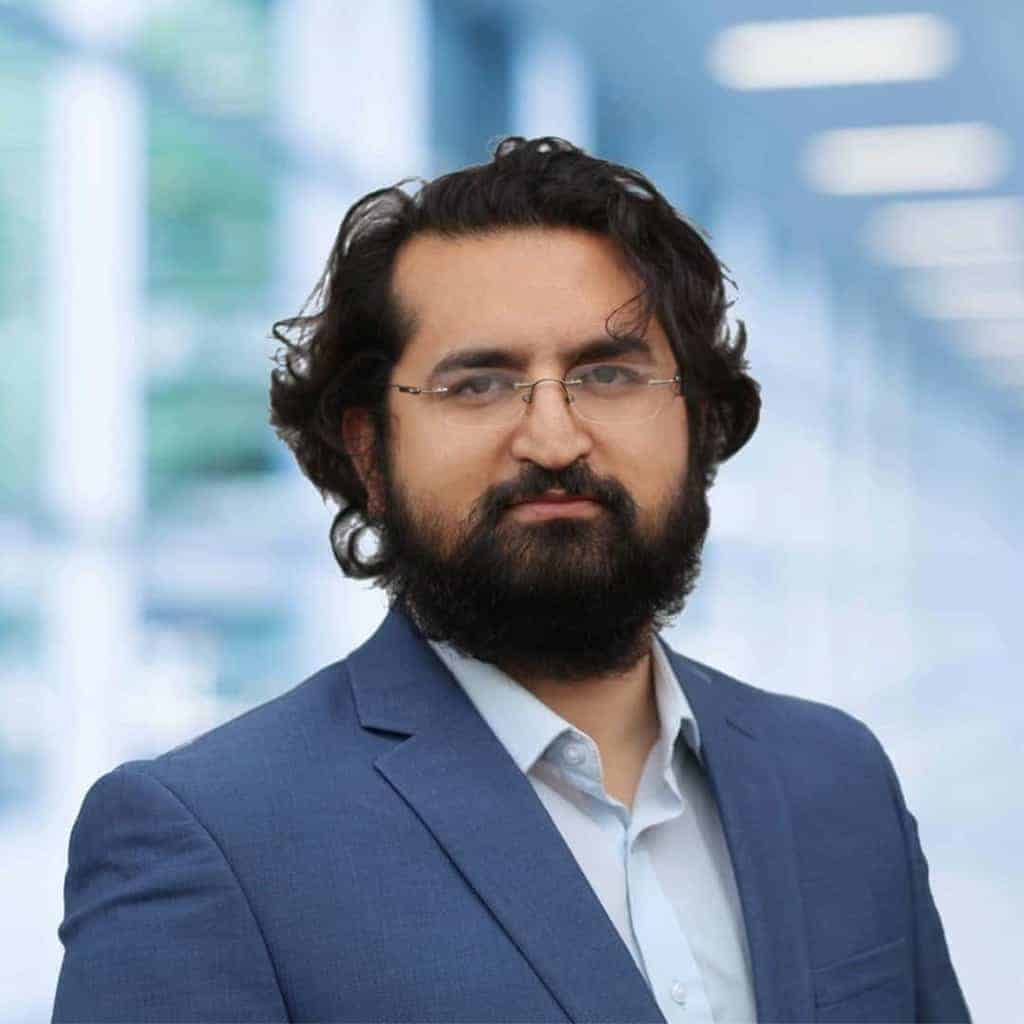What to expect for PLAB/UKMLA
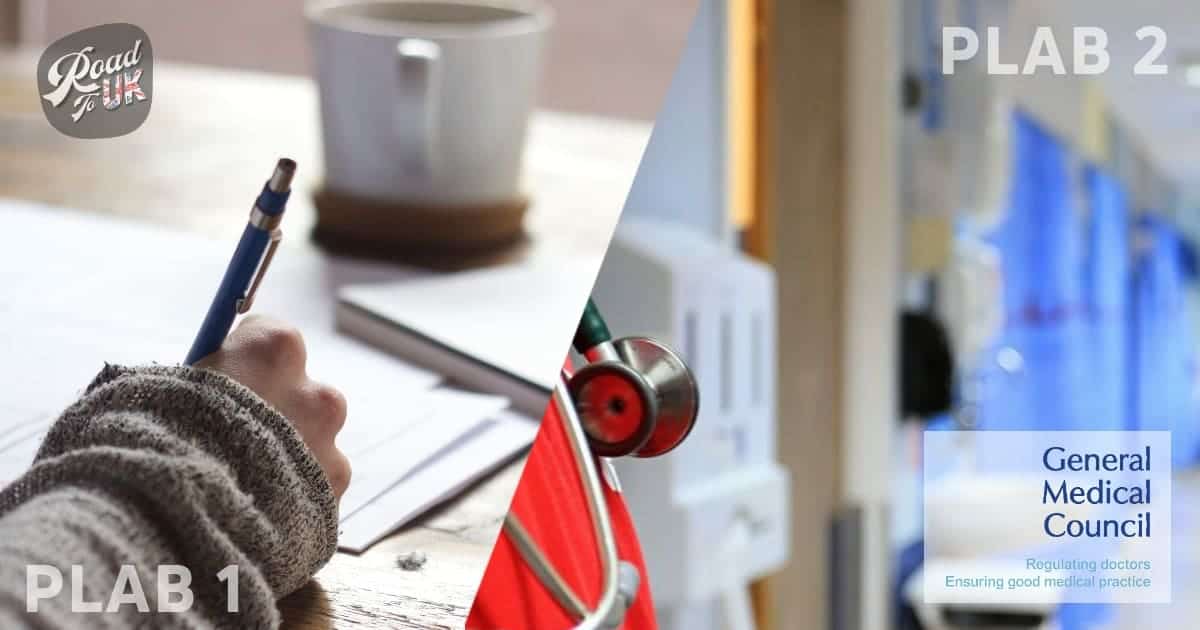
Now that the IELTS or OET are done and out of the way, the road becomes that much easier. Just two little exams left until you can register yourself as a doctor in the UK. Book them as quickly as you can find an available date, and be done with them already!
What is PLAB/UKMLA 1?
Exam structure
It’s made up of 180 single best answer questions (SBAs), and is a computer-marked written multiple choice type exam. Each question starts with a short scenario followed by a question eg ‘What is the single most likely diagnosis?’ You need to choose the right one out of five possible answers, labelled A to E.
For information on how to book your PLAB/UKMLA 1 exam, please look here to know how to open a GMC online account.
What are the things provided for PLAB/UKMLA 1 exam
You will be given one A4 size booklet when the time starts. This booklet has all the questions and also normal lab values at the end. Each page contains 4-5 questions so its quite a thick booklet containing 180 questions. The questions which have ECGs or photos are on a separate paper tucked in with its corresponding question.
If you enter more than one answer on the answer sheet, you’ll gain no mark for the question. There are also no negative marks for incorrect responses, so come what may, put down a response. The exam paper may include images, ECGs, and x-rays.
You’ll be given one double-sided answer sheet at the exam with instructions on how to complete it. You must complete the information required at the top of the sheet. It will look like this:
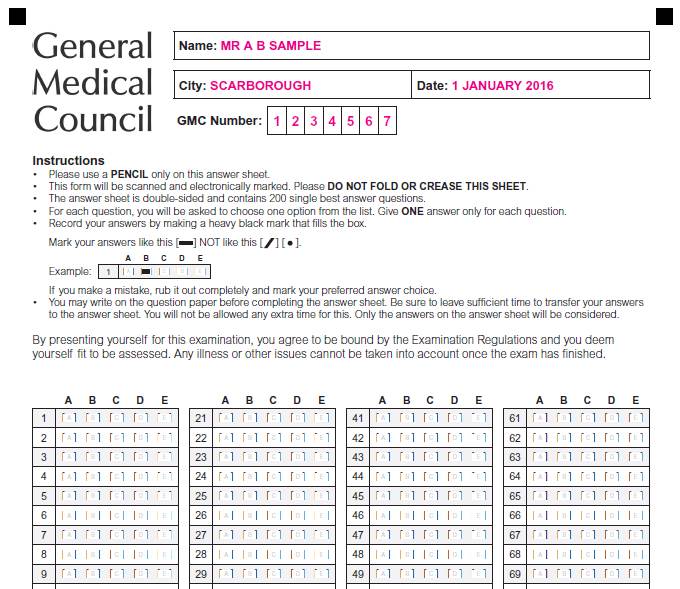
Finding your PLAB/UKMLA 1 exam center
You will be sent an email telling you where to go and what time you must be there by. Don’t be late under any circumstances. The exam will last 3 hours. You won’t be allowed to leave the exam hall in the first and last half hour of the exam, so keep that in mind when you consider bathroom breaks into your exam timing.

What to bring with on the day of PLAB/UKMLA 1
Please make sure to bring your passport and booking confirmation, along with at least 2 HB pencils, an eraser, and a pencil sharpener. You cannot bring your bag/phones/study materials with you inside the exam hall, so do not bring anything valuable. If you require further clarification regarding the examination setting and what behavior is expected of you, along with how many attempts you have for the exam, please read more here.
GMC has also provided a content map so that you can have a general understanding of what topics to expect in the exam. The map will tell you what you can expect to be covered by the questions in part 1, but it won’t tell you what questions or scenarios you will face on the day you take the tests.
Want to know how to prepare for PLAB/UKMLA 1? Check out our MLA compliant question bank that covers everything you need to know!
Make sure to check How to plan for IELTS/OET and PLAB 1 and How to plan for PLAB 2 and course before making any plans.
What is PLAB/UKMLA 2?
Part 2 of the test is a practical assessment and takes the form of an Objective Structured Clinical Examination (OSCE). DO NOT BE LATE. Try and locate the exam center ahead of time so you can reach easily the day of your exam.
What to wear for PLAB/UKMLA 2?
Keep in mind that the dress code is as you’d be in any clinical setting in the UK. There is no need for a white coat/apron. Just dress in a semi professional manner with your arms bare from the elbow. Avoid any sort of excessive jewelry, rings, bracelets or watches. Guys, no need for a tie, please just wear a collared shirt. If you wear a hijab/scarf, tuck up any loose ends so that they don’t fall on the patient during examination. The same goes for long hair. Pull it up, and pin back any stray strands.
ID check for PLAB/UKMLA 2
An ID check will take place before your exam starts. Make sure you have checked your booking confirmation thoroughly to know which documents GMC wants you to bring on the exam day. You must bring your passport and booking confirmation with you. Your identity will be confirmed, and a photo will be taken. You’ll then be given an ID card and a lanyard to wear for the duration of the exam.
Wondering how you’ll get to your exam center? Look no further, here is The Journey to PLAB 2!
How does the OSCE take place for PLAB/UKMLA 2?
After everyone has undergone their ID check, you all will be ushered into a room that will have some coffee and biscuits. Have a small snack if you’re feeling peckish. You’ll then be shown a quick video that will illustrate what you can expect in the exam hall.
When the video is done, you will get a quick pep talk, and then will go into another room just outside the exam hall where you will be given a cubby to put your belongings in. A small key will be given that you can attach to your lanyard in case you don’t have pockets.
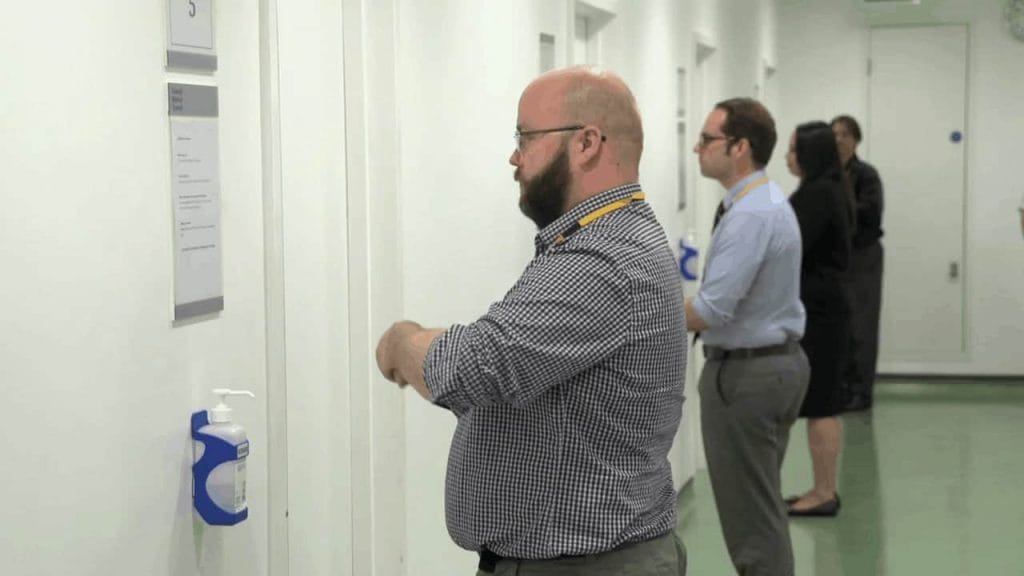
You will have noticed by that point that your ID card has a number on it. This is the station you will start at, and how you will have to line up beforehand. You will all then be asked to form a queue corresponding to your number, and will be walked into the exam hall. If you require further clarification regarding the examination setting and what behavior is expected of you, along with how many attempts you have for the exam, please read more here and here.
Assessment of PLAB/UKMLA 2 OSCE
Below is an example of the mark sheet you will be graded against:
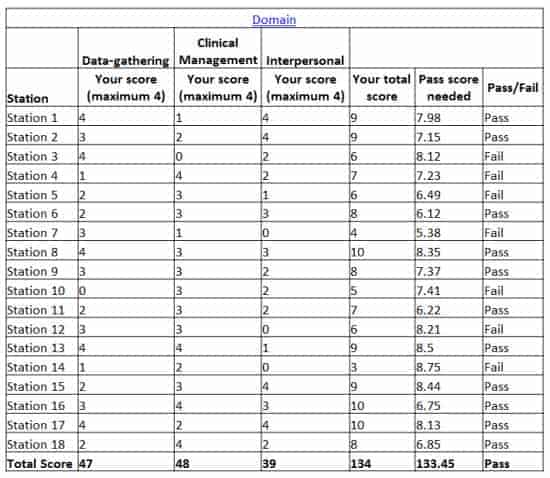
As we can see, there are three domains your every OSCE station will be marked against:
- Data gathering
- Clinical management
- Interpersonal skills
And following are the skill set you will have to portray.
- Consultation
- Diagnosis
- Examination
- Findings
- Issues
- Language
- Listening
- Management
- Rapport
- Time
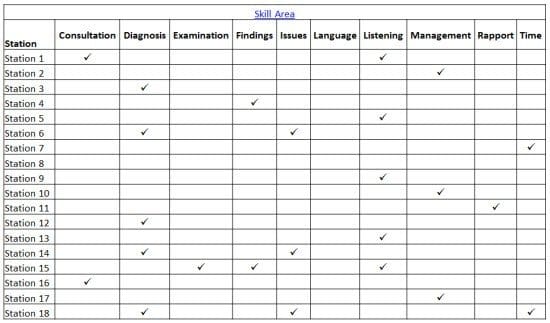
For further information regarding how the marking system works and understanding the feedback given, read more here.
To conclude
When your exam is done, and you know you’ve given your best shot, just relax. There’s nothing you need to worry about regarding your results because I’m confident that you’ve passed comfortably.
That being said, if you’re really antsy and need something to keep you busy, I would suggest checking out what to do after PLAB 1 or what to do after PLAB 2 just to stay ahead of the curve.
Still curious about the exam structure of the PLABs and other related queries? Not to worry, our interactive seminar on the topic will clear any remaining confusion. Other than that, stay calm, stay cool, and take everything in stride.
Good luck!

